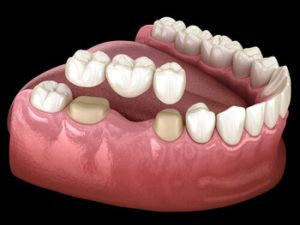Seeing the difference before and after dental bridge placement can shape how you view your smile, your bite, and even your confidence. The visual transformation is often the first thing people notice, but the impact goes beyond appearance. This guide explores what shifts, what to expect, and how your oral health responds to this restorative solution.
Planning for a New Smile: What Happens First
Getting a dental bridge begins with preparation, and what happens during this stage sets the tone for a successful outcome. Understanding how your natural teeth, gums, and jaw are assessed helps explain the tailored approach.
 Evaluating the Condition of Surrounding Teeth
Evaluating the Condition of Surrounding Teeth
A dental bridge relies on the strength and alignment of the abutment teeth. These adjacent teeth must be healthy enough to support the final bridge without shifting under pressure. Your dentist will check for decay, cracks, or signs of gum problems before recommending the right style of bridge.
Considering the Placement Area and Function
Back teeth and front teeth face different demands. Bridges placed in the front are more visible and must mimic the shape and colour of natural teeth, while those in the back must handle bite force when you chew. The selected material reflects these differences.
Selecting Between Traditional and Alternative Options
Traditional bridges attach to natural teeth using dental crowns. Cantilever bridges may be used when there is only one tooth next to the gap. Maryland bridges involve a metal framework bonded to the back of other teeth, often chosen for minimal prep in visible areas.
What to Expect During the Dental Bridge Procedure
The dental bridge procedure unfolds in stages, each essential to building a secure and functional replacement. From preparation to fitting, each step ensures the final result feels comfortable and looks natural.
Tooth Preparation and Temporary Restoration
Your dentist begins by reshaping the abutment teeth to allow space for the crowns and bridge. A temporary bridge is installed to protect exposed areas while the permanent one is being crafted.
 Creating Custom Moulds for a Perfect Fit
Creating Custom Moulds for a Perfect Fit
Dental impressions are taken to capture the size, alignment, and spacing of your teeth. These are forwarded to a dental lab, where technicians create a porcelain bridge or other material based on your unique anatomy.
Fitting the Final Bridge
At a later office visit, the new dental bridge is placed, checked for fit, and cemented in place. This final bridge matches the colour and contour of your natural teeth, completing your smile makeover without altering the appearance of surrounding teeth.
How Appearance and Function Improve After Treatment
Once the bridge is in place, the changes can be both immediate and long-lasting. Patients often notice improvements in bite comfort, aesthetics, and speech, especially in cases involving several missing teeth.
Replacing Gaps with a Natural-Looking Solution
Implant supported bridges or traditional styles both offer cosmetic benefits. A porcelain bridge restores balance and symmetry to the mouth, making it easier to smile confidently without feeling self conscious.
Porcelain crowns are often chosen for their natural appearance, blending seamlessly with the rest of the smile.
Dental bridges offer a visually pleasing result while restoring the gap left by missing teeth. In many instances, this treatment helps improve overall confidence in both social and professional settings.
Restoring Function to Everyday Activities
Chewing and speaking become more comfortable once artificial teeth replace missing teeth. Implant supported designs also help reduce bone loss, which can occur when tooth roots are no longer present to stimulate the jaw. Dental implants provide essential support beneath the bridge, helping distribute pressure more evenly across the bite.
This restores function in a way that feels stable and natural during daily activities. For patients with several missing teeth, this added stability makes a noticeable difference in comfort and performance.
Supporting the Health of Other Teeth
Leaving tooth loss untreated may allow other teeth to shift out of alignment. A new dental bridge keeps adjacent teeth stable, protecting bite function and reducing wear over time. When gaps are left untreated, surrounding teeth can tilt or become loose due to uneven pressure.
Dental bridges offer a proactive solution that supports proper alignment and minimises stress on healthy structures. In many instances, early placement helps avoid the need for more extensive corrective treatment later.
The Long-Term Outlook with Proper Care
With the right maintenance, crowns and bridges can remain strong and attractive for many years. Below, we explore how care, checkups, and habits contribute to durability and health.
Daily Cleaning and Maintenance
Patients must brush gently around the bridge and floss under the artificial teeth. Special tools may be used to clean beneath the bridge without damaging the gums.
Professional Monitoring and Adjustments
Routine dental appointments ensure the bridge stays secure and does not interfere with the gums or neighbouring teeth. Minor adjustments may be made as needed to preserve comfort.
Avoiding Habits That Risk Damage
Biting hard objects, neglecting oral health, or skipping visits may reduce the lifespan of bridges. Consistent care helps prevent complications and keeps the mouth stable.
Considering a Dental Bridge? Let Us Guide You

Replacing missing teeth can restore harmony to your bite and prevent further strain on adjacent areas. Every treatment is designed with your comfort, goals, and long-term dental health in mind. Our team will guide you through the process and answer any questions you may have. Let us help you regain function and confidence with a natural-looking solution. Call us today on (02) 9969 3982 to schedule your appointment and take the next step toward a stronger, more confident smile.
References
https://www.webmd.com/oral-health/dental-health-bridges
https://www.colgate.com/en-in/oral-health/bridges-and-crowns/dental-bridges-and-oral-health


 Evaluating the Condition of Surrounding Teeth
Evaluating the Condition of Surrounding Teeth Creating Custom Moulds for a Perfect Fit
Creating Custom Moulds for a Perfect Fit




